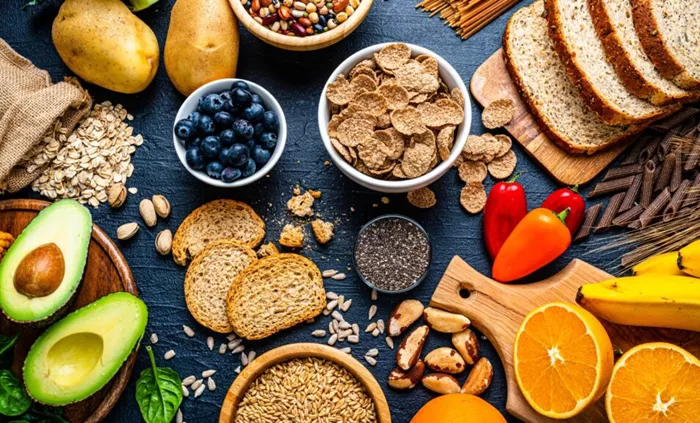A new trend on TikTok known as “fibermaxxing” is turning attention to the often-overlooked nutrient: fiber. While many social media health trends spark skepticism, experts say increasing your fiber intake—within reason—can provide real health benefits. Most adults fall short of the recommended 25 to 38 grams of fiber per day, but upping your intake may improve heart health, digestion, blood sugar levels, and more.
Below, we break down what happens when you consistently include more fiber in your daily diet—and how to do it in a way that supports your overall well-being.
1. Heart Health Gets a Boost
High-fiber diets have been linked to lower risks of heart disease and stroke. Fiber may help lower blood pressure, reduce inflammation, and improve cholesterol levels. According to research, these effects could translate into a 7% to 24% reduction in heart-related risks. Additionally, fiber-rich diets have been associated with lower mortality from heart disease.
2. Weight Loss Becomes Easier
Fiber slows digestion and promotes a lasting feeling of fullness. In one study, 63% of participants lost an average of 7 pounds after following a high-fiber diet for 16 weeks. Those who saw results were eating significantly more fiber than others, helping them avoid overeating and better control appetite.
3. Digestion Becomes More Regular
There are two types of dietary fiber: soluble and insoluble. Soluble fiber absorbs water and softens stools, while insoluble fiber adds bulk and helps food move through the digestive tract. Together, they support healthy and regular bowel movements. Foods like oats, beans, fruit skins, grains, and vegetables can help you get a balanced mix of both.
4. Blood Sugar Levels Improve
Fiber helps regulate blood sugar by slowing the absorption of sugar in the bloodstream. This is especially beneficial for people with type 2 diabetes. Studies have shown that consistent fiber intake can improve long-term blood sugar control, reflected in lower HbA1c levels, a key diabetes marker.
5. Gut Health Thrives
Certain fibers act as prebiotics, feeding the beneficial bacteria in your gut. These bacteria ferment the fiber and produce short-chain fatty acids (SCFAs), which help reduce inflammation and support overall digestive health. This process helps prevent harmful bacteria from taking over and keeps your gut microbiome in balance.
6. Inflammation May Decline
Chronic inflammation is linked to numerous health problems, from heart disease to cancer. Research shows that just a 5-gram increase in fiber can reduce C-reactive protein (CRP)—a key marker for inflammation. Fiber from grains appears especially effective in this anti-inflammatory role.
7. Mental Health May Improve
A growing body of research connects gut health with mental well-being. Some studies suggest that more fiber may reduce the risk of depression. A meta-analysis found that increasing fiber intake by 5 grams daily lowered depression risk by 5%. While more research is needed, the gut-brain connection provides a promising explanation.
8. Lower Risk of Colorectal Cancer
Fiber may help prevent colorectal cancer by keeping your digestive system moving, improving the gut microbiome, and limiting the impact of bile acids. SCFAs like butyrate, produced when gut bacteria ferment fiber, may also lower cancer risk by reducing inflammation in the colon.
How Much Fiber Do You Really Need?
Your ideal fiber intake depends on your age and sex. Here’s a quick guide based on the 2020–2025 Dietary Guidelines for Americans:
| Age Group | Males | Females |
|---|---|---|
| 19–30 | 34 g | 28 g |
| 31–50 | 31 g | 25 g |
| 51+ | 28 g | 22 g |
| 4–8 | 20 g | 17 g |
| 2–3 | 14 g | 14 g |
For children under 1 year old, no specific fiber recommendation is provided.
Tips for Eating More Fiber
1. Choose Whole Grains:
Replace refined grains with whole grains like oats, brown rice, barley, corn, and quinoa. Aim for at least half of your grain intake to be whole grains.
2. Add Nuts and Seeds:
Nuts like almonds and seeds like chia or flax are not only filling—they’re fiber-rich. Add them to yogurt, salads, or smoothies for a boost.
3. Snack on Fruits:
Fruits, especially those with edible skins (like apples or berries), are high in fiber. Combine them with yogurt or oatmeal for a fiber-packed snack.
4. Load Up on Vegetables:
Vegetables should be part of every meal. Aim for 2.5 cups daily to support digestion and help meet your fiber goals.
5. Consider Supplements if Needed:
Food should come first, but fiber supplements such as psyllium (Metamucil) or wheat dextrin (Benefiber) can help if you’re falling short. They typically add 3–6 grams of fiber per serving.
Caution: Increase fiber intake slowly to avoid side effects like bloating or gas. Drink plenty of water to support digestion as you add more fiber to your diet.
How to Tell If You’re Getting the Right Amount
Signs of Enough Fiber:
- Daily, regular bowel movements
- Smooth, formed stools (check against the Bristol Stool Chart)
- More stable energy and reduced hunger between meals
Signs of Too Much Fiber:
- Bloating, gas, and abdominal discomfort
- Mineral absorption issues (iron, zinc, calcium, magnesium)
- Severe cases could lead to bowel obstruction
Conclusion
Fibermaxxing may be more than a fleeting online trend—it’s a simple, science-backed step toward better health. From heart and gut benefits to better weight management and even mood support, fiber plays a crucial role. By making mindful food choices and gradually increasing your intake, you can unlock the full potential of this essential nutrient.
Related topics:
- 3 Ways High-Fiber Avocados Boost Digestive Health and Wellness
- The Best 5 Fiber Supplements for Men’s Health
- Top 5 Fiber Supplements For Men: Boost Digestion And Overall Wellness


